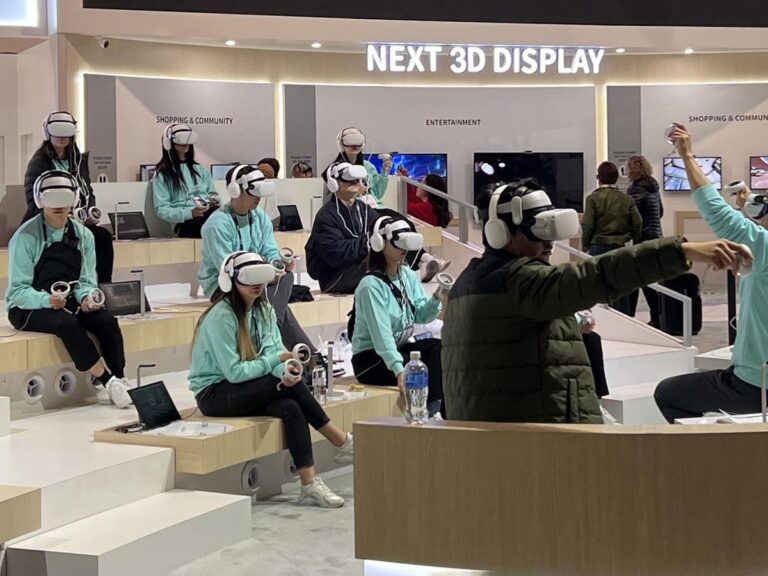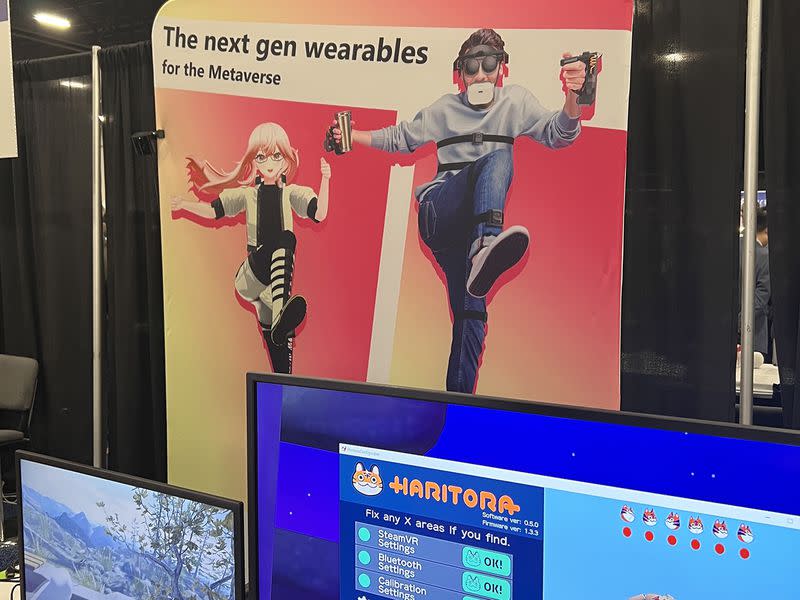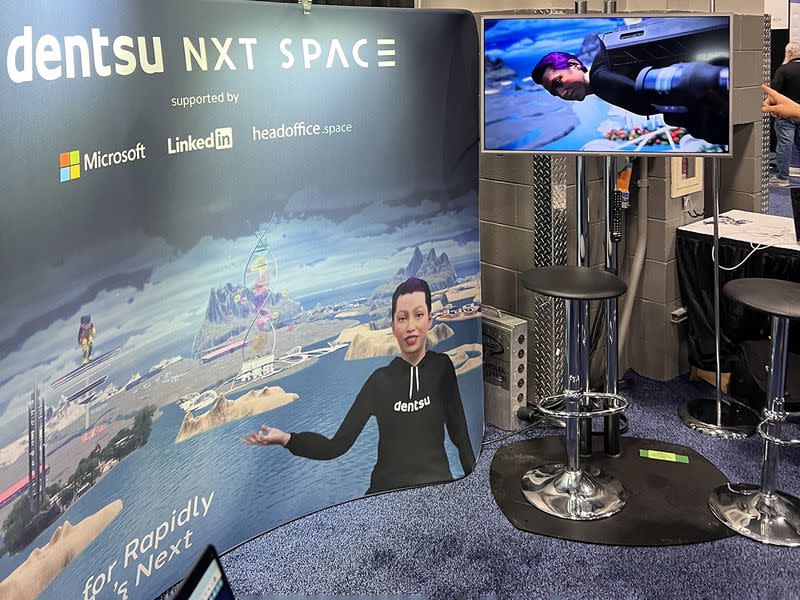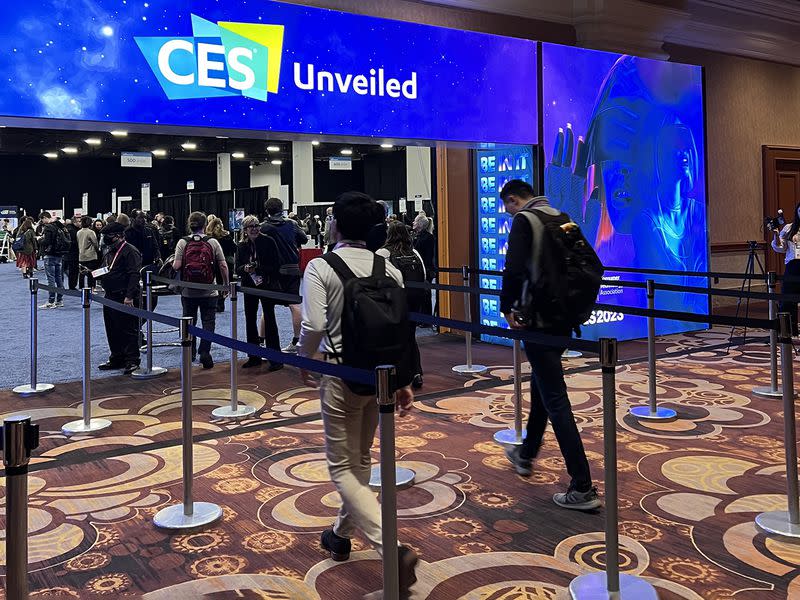
Source: news.google.com
What is the metaverse? Well, it depends who you ask, as the vague term referring to an immersive virtual world of the future continues to morph across industries. Will it be a social platform? Will virtual reality (VR) headsets be the gateway? Will it blur the line between reality and technology?
At this year’s massive four-day Consumer Electronics Show (CES), it became clear that Web2 and Web3 native companies have different views on the way forward.
The term “metaverse” was first coined in Neal Stephenson’s 1992 science fiction novel “Snow Crash,” though the development of technologies to enhance the metaverse experience has expanded rapidly in recent years. Major companies like Meta Platforms (formerly Facebook) have shifted their focus to innovation in the sector, and countries like Japan have unveiled plans to integrate metaverse technology nationwide. Platforms like The Sandbox, Spatial, and Decentraland have sprung up to offer virtual social experiences, though a fully immersive, interconnected metaverse does not yet exist.
Blockchain technology is being used as a tool to power the metaverse, and the Central Hall of the Las Vegas Convention Center was filled with new technologies familiar to the Web3 world. From metaverse startup Ixana’s haptic virtual reality technology to Samsung and LG smart TVs with blockchain integrations like wallets and non-fungible token (NFT) markets, CES offered a glimpse into a fantastic decentralized future.
But some Web3 creators say the metaverse won’t arrive as a result of a technological breakthrough, but will find a way to seamlessly integrate into everyday life.
“Bringing together the digital and the physical in an ordinary, everyday way, with ordinary, everyday technology is really at the core. [of the metaverse]said Cathy Hackl, director of the metaverse at Journey, a Web3 consulting firm, on a panel at CES.
Web2 brands create meaningful experiences
Whether it’s Metaverse Fashion Week in March, Snapple’s Metaverse Bodega in August, or Metaverse Music Festival in October, many top brands took their first steps on Web3 last year. However, some critics have been quick to label these activations simply a “PR stunt.”
Justin Hochberg, CEO and founder of metaverse agency Virtual Brand Group, told CoinDesk there are reasons for brands to explore the metaverse beyond producing a one-time activation: They can deepen relationships with consumers, expand into new markets and Avoid the challenges associated with the physical world. .
“The laws of gravity don’t apply and there are no problems with the supply chain,” Hochberg said. “When we can create a race car as easily as a scarf, it opens the creative floodgates to what you want your brand to be.”

He predicts that as more businesses adopt Web3, they will move beyond simple activations and work to create seamless solutions for their consumers.
“I think you will start to see people creating real solutions to real problems, not just for the sake of technology,” Hochberg said. “Ultimately, the metaverse will be incorporated into people’s daily lives much like the internet or your iPhone, so you won’t even have to think about it.”
Large Web2-native technology companies are also looking to integrate into Web3 and are creating the technologies to do so. From the bullish vision of the metaverse of Henry Bzeih, director of global mobility, automotive and transportation strategy at Microsoft, to LG’s “shoebox” NFT product, household names are looking to build for the long haul.
“When I see executives talk about [the metaverse] and talking about his investment in it really gives me optimism and hope,” Shira Lazar, founder of the independent publication What’s Trending and host of the “Inside Web3” podcast, told CoinDesk. “We start to see these real life applications beyond the numbers we have seen in Decentraland and The Sandbox in 2022.”
Rahul Sabnis, executive vice president and chief creative officer of iHeartMedia, said on a panel that the digital media company chose to launch activations in spaces of the Web2 metaverse that were already popular, but that it was important to showcase itself in ways other than “one and done.” He believes brands need to keep fans engaged and touched on ways Web3 could do that.
Sabnis imagined fans at “every concert, [they] scan the QR code, it acts as a wallet, NFT drops are there, there is a chance for seat upgrades.” These wallets could sync with where you are in real time and expand the experience with augmented reality, for For example, in the end, whether Web2 or Web3, Sabnis concluded that “entertaining things are the most important things in people’s lives.”
The future of work
Many metaverse activations thus far have focused on entertainment and leisure, and nothing has gotten more attention than video games. While gamification facilitates smoother adoption from Web2 to Web3, to date it has not proven to be the key to achieving mass adoption.
A trend at CES was the use of metaverse technology to improve productivity and usher in the future of work, paving the way for a new audience to experience Web3.
Dentsu NXT Space, a metaverse initiative in collaboration with Microsoft, LinkedIn, and metaverse company HeadOffice.Space, is creating a platform for working in the metaverse.
“People had a hard time imagining use cases that matched their businesses, but now they have matured and know how they want to use it,” Marco Carvahlo, CEO of HeadOffice.Space, told CoinDesk. “We see a lot of interest from HR departments to e-commerce.”
With a showroom at CES, Dentsu NXT Space showcased some of its technologies to highlight how its platform can drive business to Web3.
“In the early iterations of the metaverse, you couldn’t do what we’re doing, which is build the metaverse for productivity, so you can bring your clients, bring your meetings, bring your clients, and integrate them into your website,” Carvahlo said. . “It’s going a step further so we can have real productivity in the metaverse.”

Dentsu NXT Space is not alone in its efforts to bring work to the metaverse. Japanese company FORUM8 International seeks to build a productivity-oriented metaverse for companies to set up their offices in the metaverse. The company also displayed its technology on the floor, showcasing software that will allow businesses to work online.
“We are trying to create something user-friendly, integrating communication features: in the office, you want to have face-to-face communication, you can enter meetings by entering meeting rooms, [or you] you can start a voice chat in VR and have a text chat in the office,” said Luc Kuenemann, Software Engineer at FORUM8 International.
While more brands are entering the metaverse, their approaches are not all the same. From clunky headsets to jumpsuits to immersive computing experiences, much of the technology that shapes the metaverse is taking many different forms. Kuenemann told CoinDesk that considering these differences will be crucial in figuring out how to unify social experiences.
“How do you integrate mixed realities: people who want to work in virtual reality, augmented reality or simple 3D experiences?” Kuenemann asked. “How do you get all those people to work together the way they want to work? It is a great challenge to face [in the metaverse].”
cryptographic elements
While the various metaverse exhibits at CES incorporated a range of Web2 technologies, the native Web3 brands presenting at the event made the case for blockchain and cryptocurrency as an integral part of some of these innovations.
Sandy Carter, SVP of company Web3 Unstoppable Domains, told CoinDesk that the company’s technology, such as crypto wallets and blockchain domains, is creating the on-ramps for major metaverse experiences.
“We’re the gateway to Web3…and that’s where a lot of people are today. That piece of digital identity is one of the first building blocks of the metaverse and Web3,” Carter said.

Digital identity, in the form of an Ethereum domain or wallet ID, is one way Unstoppable is helping users carry their identity through decentralized applications and other blockchain-based products. Carter told CoinDesk that “more integrations [of identity] with utility”, will be released in 2023, and interoperability will be a key component in making the metaverse accessible.
Although the crypto space is still largely dealing with the widespread fallout from the FTX meltdown, Web3 companies remain bullish. The Blockchain Association’s inaugural presence at CES was aimed at highlighting how blockchain technology and cryptocurrencies can support many of the technology trends predicted for the coming year.
Ron Hammond, director of government relations for the Washington, DC-based cryptocurrency advocacy group, told CoinDesk that the current state of the market is not stopping innovation in the space, as many companies are still exploring cryptocurrency payments, NFTs and decentralized finance (DeFi).
“We have gone back to the basics of rebuilding, focusing on technology and not talking about [crypto] prices so much,” Hammond said. “We desperately need that energy after the FTX crash.”
He also noted that among cryptocurrency products, profit is on the rise and will only grow as we enter the new year.
“People in DC are clamoring for real world use cases and it’s all over the place. [CES].”
The commitment to the brand
Web3, a buzzword in its own right, is an ecosystem of similar buzzwords that come with barriers to entry. So as terms like the metaverse, blockchain, and NFT find their way into the conversation, some people and companies have been eager to distance themselves from the jargon.
Kirthiga Reddy, co-founder and CEO of Web3 marketing agency Virtualness, told a panel that NFTs shouldn’t be the term of reference for the technology and that it’s actually a reference to metadata. Rather, self-identifying descriptions and interoperability offerings are what’s needed to facilitate adoption.
As more brands enter Web3, they have attempted to demystify these technologies by calling NFTs “digital collectibles.” Starbucks’ Odyssey loyalty program, the minting and sale of Meta digital art on the platform, and preferred restaurant reservation tokens from the NFT Front of House collective are just a few examples of initiatives that are moving away from the use of “no-nonsense tokens.” expendables” in favor. of language that facilitates the onboarding process.
“The terminology has replaced the reality of what’s going on,” said Ted Schilowitz, a futurist at Paramount Global. “For me, in a way I want to retire. I want to talk about the way technology drives innovation.”
A common thread throughout CES was creating seamless experiences that focus on what fans and communities really want. These experiences must also be enjoyable, which will prove key to mainstream adoption of the metaverse.
“In the metaverse, we are all world builders and we all have the opportunity to build,” Hackl concluded. “At the end of the day, it’s about people.”
Read More at news.google.com